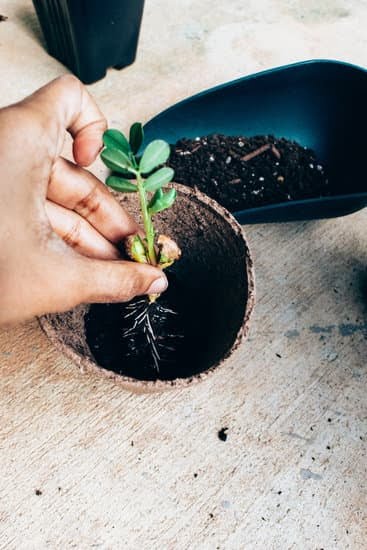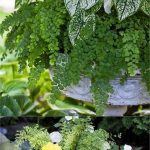Urban gardens ideas are becoming increasingly popular in today’s society, as more people recognize the value of growing their own food and creating green spaces in urban areas. Urban gardens, whether in containers, on walls, or in community plots, offer a range of benefits for individuals and communities. They provide an opportunity to connect with nature, reduce environmental impact, and foster a sense of community.
In urban areas where space is limited, container gardening has become a popular way to grow plants and flowers. Utilizing small spaces such as balconies or rooftops can provide ample opportunities for gardening. From herbs and vegetables to flowers and succulents, there are numerous creative container ideas for urban gardens that allow for an abundance of beautiful and practical plants.
Another innovative idea for urban gardens is vertical gardening, which involves utilizing walls and trellises to grow plants upwards. This approach not only maximizes space but also creates visually appealing greenery within city confines. Vertical gardening offers advantages for urban areas by improving air quality, reducing energy costs, and providing insulation for buildings.
Container Gardening
Urban gardening is becoming increasingly popular as people in cities look for ways to connect with nature and grow their own food. Container gardening is one of the best urban gardens ideas for those with limited space. It allows you to utilize small areas such as balconies, patios, or even windowsills for growing plants. The key to successful container gardening is choosing the right plants and getting creative with your containers.
When it comes to choosing plants for container gardening, it’s important to consider the available sunlight in your urban space. For sunny areas, herbs like basil, rosemary, and thyme are excellent choices. For shadier spots, consider growing leafy greens such as lettuce and spinach. You can also incorporate some edible flowers like nasturtiums or pansies for a pop of color in your urban garden.
In addition to choosing the right plants, getting creative with your containers can make a big difference in an urban garden. Think outside the traditional terra cotta pot and consider using old tin cans, wooden crates, or even repurposed buckets as planters. Not only does this add a unique touch to your urban garden but it also helps reduce waste by giving new life to items that would otherwise be discarded.
| Best Plants for Container Gardening | Creative Container Ideas |
|---|---|
| Herbs like basil, rosemary, and thyme (for sunny areas) | Old tin cans |
| Lettuce and spinach (for shadier spots) | Wooden crates |
| Edible flowers like nasturtiums or pansies | Repurposed buckets |
Vertical Gardening
Utilizing Walls and Trellises for Growing Plants
When it comes to urban gardens, space is often limited. However, vertical gardening provides a solution by utilizing walls, fences, and trellises to grow plants upwards instead of outwards. This not only maximizes space but also adds visual interest to urban landscapes. By installing vertical planters or creating DIY trellises, urban gardeners can make the most out of their limited outdoor areas.
Advantages of Vertical Gardening in Urban Areas
Vertical gardening offers several advantages for urban areas. It allows city dwellers to grow their own produce without needing a large yard. Additionally, the upward growth of plants can provide shade, privacy, and even noise reduction in busy urban environments. Furthermore, vertical gardens can contribute to improved air quality and cooling effects in cities.
Best Plants for Vertical Gardens
Choosing the right plants is essential for successful vertical gardening in urban settings. Some ideal options include vine plants such as tomatoes, cucumbers, and peas which naturally climb and will thrive when given a support structure.
Other popular choices for vertical gardens are herbs like mint, thyme, and basil that are well-suited for compact spaces and can be easily harvested for cooking. When planning a vertical garden in an urban area, it’s important to select plants that are suitable for the specific microclimate and light conditions of the location.
Community Gardens
The Benefits of Joining or Starting a Community Garden
Community gardens promote healthier eating habits, physical activity, and mental well-being. They create a sense of belonging and social cohesion within the community. Additionally, they can help reduce crime rates and increase property values in the surrounding area. By growing food collectively, participants can save money on groceries and reduce their ecological footprint.
How to Find or Create a Community Garden in Your Area
Many cities have existing community gardens that are open to new members. Local neighborhood associations, gardening clubs, or municipal parks departments often maintain these types of spaces. If there isn’t already one in your area, consider starting your own community garden by rallying support from local residents and identifying available land.
Tips for Successful Community Gardening
Effective communication, coordination, and cooperation among members are essential for the success of any community garden. Establishing clear rules and guidelines for maintaining plots can help avoid conflicts. Regular meetings and workdays are also important for building camaraderie among participants. Furthermore, it’s crucial to involve people with diverse skills and abilities to ensure the smooth functioning and longevity of the garden.
By utilizing communal resources and sharing knowledge, urban gardeners can build a thriving oasis right in the heart of their city.
Edible Landscaping
Incorporating food-producing plants into urban landscapes has become increasingly popular in recent years. Edible landscaping is a creative and sustainable way to utilize small urban spaces for growing fruits, vegetables, and herbs. By integrating edible plants into the existing urban environment, city dwellers can enjoy the benefits of homegrown produce while adding greenery to their surroundings.
One of the main benefits of growing your own food in cities is the opportunity to harvest fresh, organic produce right at home. With edible landscaping, urban gardeners can cultivate a variety of edible plants such as tomatoes, peppers, lettuce, strawberries, and culinary herbs without the need for a traditional vegetable garden. This allows city residents to have easy access to healthy, locally-grown food while reducing their carbon footprint by minimizing transportation-related emissions.
When it comes to choosing the best edible plants for urban gardens, it’s important to select varieties that are well-suited for small spaces and urban environments. Compact fruit trees, dwarf or bush varieties of vegetables, and fast-growing herbs are ideal choices for edible landscaping in cities. Additionally, plant selection should consider the specific climate and growing conditions of the urban area.
By incorporating edible landscaping into urban environments, city dwellers can transform their outdoor spaces into productive and sustainable oases that provide not only aesthetic value but also practical benefits in the form of homegrown food. Whether it’s a small balcony garden or a communal green space, edible landscaping offers endless possibilities for creatively integrating food production into urban living.
| Edible Plants | Benefits |
|---|---|
| Tomatoes | Fresh produce at home |
| Basil | Reduced carbon footprint |
| Strawberries | Eco-friendly gardening practices |
Low-Maintenance Gardening
For city dwellers with busy schedules, maintaining a garden may seem like a daunting task. However, with the right approach and plant selection, creating a low-maintenance urban garden is entirely possible. Here are some tips to consider for those who want to enjoy their green space without spending hours on upkeep:
- Choose the right plants: Opt for hardy and resilient plants that can thrive in urban environments with minimal care. Some examples include succulents, ornamental grasses, and native plants. These varieties require less water and attention, making them ideal for low-maintenance gardening in the city.
- Implement efficient irrigation systems: To minimize the time spent watering your garden, consider installing drip irrigation or soaker hoses. These systems deliver water directly to the roots of your plants, reducing wastage and ensuring they receive adequate moisture without requiring constant supervision.
- Embrace hardscaping elements: Incorporating non-living features such as rocks, gravel pathways, or decorative containers can add visual appeal to your urban garden while also reducing the need for regular maintenance. Hardscaping elements require far less attention than traditional planting beds, making them an attractive option for those seeking a low-maintenance gardening solution.
By implementing these strategies and selecting the right plants, urban dwellers can create a thriving low-maintenance garden that enhances their outdoor space without consuming too much time and effort. With some thoughtful planning and a bit of creativity, it’s possible to enjoy the benefits of gardening in even the busiest urban settings.
Urban Garden Design
Urban gardens are essential for creating green spaces in cities and urban areas. They provide countless benefits, such as improving air quality, reducing the urban heat island effect, and providing a place for relaxation and biodiversity. Urban gardens also serve as a source of fresh produce and can enhance the overall aesthetic of an urban environment.
When it comes to designing an urban garden, it’s important to maximize the use of limited space while still creating an aesthetically pleasing environment. Here are some tips for designing a visually appealing urban garden:
- Utilize vertical space: In urban areas where space is limited, think about utilizing walls, fences, and trellises for growing plants vertically. This not only saves space but also creates a unique and visually appealing garden.
- Incorporate multi-functional elements: Consider incorporating seating areas that double as storage or using planters that also serve as water features. Multi-functional elements help maximize the use of space while adding visual interest to the garden.
- Choose a cohesive color scheme: Selecting a cohesive color scheme for your urban garden can create a sense of unity and harmony. Whether it’s using various shades of green for foliage or incorporating pops of color with flowers, a well-thought-out color scheme can enhance the overall design.
- Embrace unique features: Urban settings often have unique architectural elements or existing features that can be incorporated into garden design. Whether it’s repurposing old industrial materials or highlighting historical aspects of the area, embracing these unique features adds character to the urban garden.
Incorporating these elements into your urban garden design can help create a visually appealing and functional outdoor space within a limited area, bringing nature into the cityscape in an attractive way.
Sustainable Urban Gardening
In conclusion, urban gardening is a vital aspect of modern city living, offering numerous benefits for individuals and communities alike. The ideas and methods discussed in this article provide practical solutions for city dwellers to pursue their gardening passions despite limited space and resources.
By embracing urban gardens ideas such as container gardening, vertical gardening, community gardens, edible landscaping, low-maintenance gardening, urban garden design, and sustainable urban gardening, individuals can make a positive impact on their surroundings while reaping the rewards of fresh produce and beautiful green spaces.
The concept of sustainable urban gardening is particularly important in today’s world. By incorporating eco-friendly practices into urban gardening endeavors, individuals can reduce their environmental impact while contributing positively to the health and well-being of their communities. From selecting native plants to implementing composting systems and water conservation techniques, there are countless ways for urban gardeners to promote sustainability in their gardens.
Ultimately, the possibilities for creating thriving urban gardens are endless, allowing city residents to connect with nature and foster a sense of community within their local neighborhoods. By exploring the diverse array of urban garden ideas presented here, individuals can cultivate flourishing green spaces that not only enhance the aesthetic appeal of their surroundings but also promote environmental sustainability and food security in cities around the world.
Frequently Asked Questions
How Do You Plan an Urban Garden?
Planning an urban garden involves assessing the space available, considering sunlight exposure, and deciding what to grow. It’s important to choose the right containers, soil, and watering system while also factoring in any local regulations or limitations.
What Plants Are Best for Urban Gardening?
The best plants for urban gardening are typically those that are compact, low-maintenance, and suitable for container growing. Herbs like basil and mint, salad greens, tomatoes, peppers, and dwarf fruit trees can thrive in urban settings. It’s also important to consider native or drought-tolerant plants to conserve water.
How Do You Make a Small Urban Garden?
Making a small urban garden requires careful utilization of space. Vertical gardening with trellises or hanging planters can maximize space. Using raised beds or stackable planters can also help make the most of limited area. Choosing compact varieties of plants and utilizing every available surface can create a lush urban oasis.

Welcome to my gardening blog! I am passionate about plants and enjoy sharing my knowledge and experiences with others. In this blog, I will write about everything related to gardening, from tips on how to get started to updates on my own garden projects.





